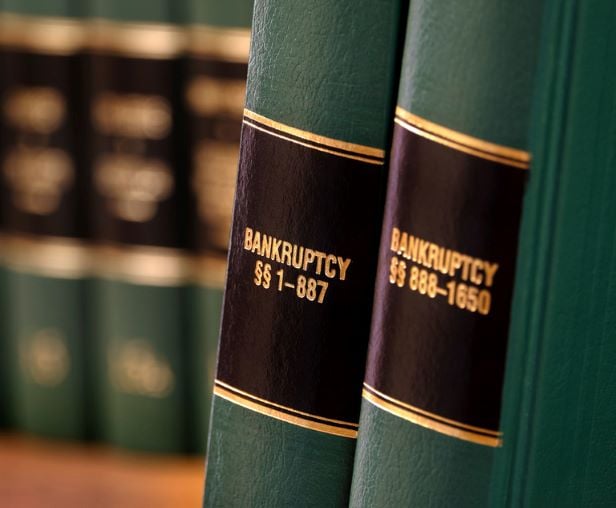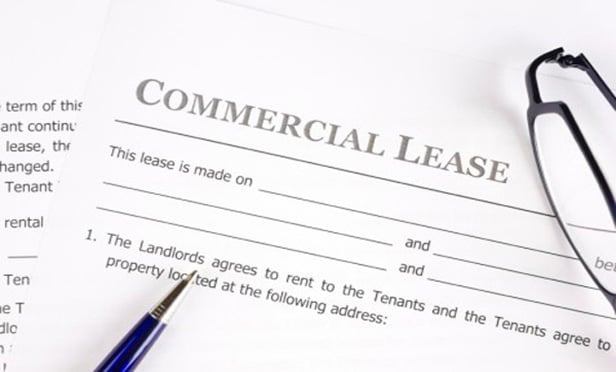Features

Landmines In Bankruptcy Appellate Practice, Part III
When courts have made important exceptions in the past year, they have either added a gloss on the Judicial Code, corrected lawyers' errors, filled in statutory gaps, or clarified the relevant statutory language.
Features

Guarantor Liability for Post-Window-Period Rent
In a case of first impression, the Appellate Division, First Department recently addressed a split in the decisions of the lower courts as to the scope of the New York City Guaranty Law.
Columns & Departments

Counsel Concerns
Malpractice Claims Filed Against Loeb & Loeb and Of Counsel Over King Fury 2 Film Production King, Holmes, Paterno & Soriano Sued for Malpractice Over Representation of Sublime Band
Features

A Strategic Guide for Lenders to Navigate Anticipated Distressed Loan Fallout
The steps outlined in this article offer a strategic guide for lenders, empowering them to navigate the complexities of loan workouts and enforcement actions with resilience and foresight.
Columns & Departments

Co-ops and Condominiums
Foreclosure on Lien for Common Charges Not Dismissed Condominium Entitled to Impose Reasonable Fee for Consent to Hallway Enclosure
Columns & Departments

Landlord & Tenant Law
Illegality Defense Raises Questions of Fact Good Guy Guaranty Not Released Exchange of Texts Does Not Constitute Settlement Agreement Landlord's Fraudulent Conveyance Claim Against Parking Lot Chain Avoids Dismissal
Columns & Departments

Fresh Filings
Notable recent court filings in entertainment law.
Columns & Departments

Development
Boathouse Not an Impermissible Second Dwelling Reduction In Size Did Not Alter Nonconforming Use Status Local Ordinance Did Not Prohibit Short-Term Rentals
Columns & Departments

Players On the Move
A look at moves among attorneys, law firms, companies and other players in entertainment law.
Features

Analysis of Recent Real Estate Sector Bankruptcy Rulings
Analysis on distressed real estate cases that present different issues. One involves the debtor's sale of real estate over the objection of the secured lender. The other involves a debtor's attempt to enjoin a construction bond company from continuing to pay claims by subcontractors after the filing of the bankruptcy case.
Need Help?
- Prefer an IP authenticated environment? Request a transition or call 800-756-8993.
- Need other assistance? email Customer Service or call 1-877-256-2472.
MOST POPULAR STORIES
- The 'Sophisticated Insured' DefenseA majority of courts consider the <i>contra proferentem</i> doctrine to be a pillar of insurance law. The doctrine requires ambiguous terms in an insurance policy to be construed against the insurer and in favor of coverage for the insured. A prominent rationale behind the doctrine is that insurance policies are usually standard-form contracts drafted entirely by insurers.Read More ›
- A Lawyer's System for Active ReadingActive reading comprises many daily tasks lawyers engage in, including highlighting, annotating, note taking, comparing and searching texts. It demands more than flipping or turning pages.Read More ›
- The Brave New World of Cybersecurity Due Diligence in Mergers and Acquisitions: Pitfalls and OpportunitiesLike poorly-behaved school children, new technologies and intellectual property (IP) are increasingly disrupting the M&A establishment. Cybersecurity has become the latest disruptive newcomer to the M&A party.Read More ›
- Abandoned and Unused Cables: A Hidden Liability Under the 2002 National Electric CodeIn an effort to minimize the release of toxic gasses from cables in the event of fire, the 2002 version of the National Electric Code ("NEC"), promulgated by the National Fire Protection Association, sets forth new guidelines requiring that abandoned cables must be removed from buildings unless they are located in metal raceways or tagged "For Future Use." While the NEC is not, in itself, binding law, most jurisdictions in the United States adopt the NEC by reference in their state or local building and fire codes. Thus, noncompliance with the recent NEC guidelines will likely mean that a building is in violation of a building or fire code. If so, the building owner may also be in breach of agreements with tenants and lenders and may be jeopardizing its fire insurance coverage. Even in jurisdictions where the 2002 NEC has not been adopted, it may be argued that the guidelines represent the standard of reasonable care and could result in tort liability for the landlord if toxic gasses from abandoned cables are emitted in a fire. With these potential liabilities in mind, this article discusses: 1) how to address the abandoned wires and cables currently located within the risers, ceilings and other areas of properties, and 2) additional considerations in the placement and removal of telecommunications cables going forward.Read More ›
- Guidance on Distributions As 'Disbursements' and U.S. Trustee FeesIn a recent case from the Bankruptcy Court for the District of Delaware, In re Paragon Offshore PLC, the bankruptcy court provided guidance on whether a post-plan effective date litigation trust's distributions constituted disbursements subject to the U.S. Trustee fee "tax."Read More ›
